Nudging a Culture
Nudging a Culture
Nudging a Culture
Nudging a Culture
Nudging a Culture
LEADING DESIGN SYSTEMS
LEADING DESIGN SYSTEMS
LEADING DESIGN SYSTEMS
LEADING DESIGN SYSTEMS
LEADING DESIGN SYSTEMS
“We usually want design systems to help grow our products. That’s how we determine the success of a design system, right? By how we improve the quality of our product. How much faster do we ship the product. How much code do we reduce in our product. But who is using those products? Users. Customers. People. That is why we do this. Our purpose is for people.” Jina Anne
“We usually want design systems to help grow our products. That’s how we determine the success of a design system, right? By how we improve the quality of our product. How much faster do we ship the product. How much code do we reduce in our product. But who is using those products? Users. Customers. People. That is why we do this. Our purpose is for people.” Jina Anne
“We usually want design systems to help grow our products. That’s how we determine the success of a design system, right? By how we improve the quality of our product. How much faster do we ship the product. How much code do we reduce in our product. But who is using those products? Users. Customers. People. That is why we do this. Our purpose is for people.” Jina Anne
“We usually want design systems to help grow our products. That’s how we determine the success of a design system, right? By how we improve the quality of our product. How much faster do we ship the product. How much code do we reduce in our product. But who is using those products? Users. Customers. People. That is why we do this. Our purpose is for people.” Jina Anne
“We usually want design systems to help grow our products. That’s how we determine the success of a design system, right? By how we improve the quality of our product. How much faster do we ship the product. How much code do we reduce in our product. But who is using those products? Users. Customers. People. That is why we do this. Our purpose is for people.” Jina Anne
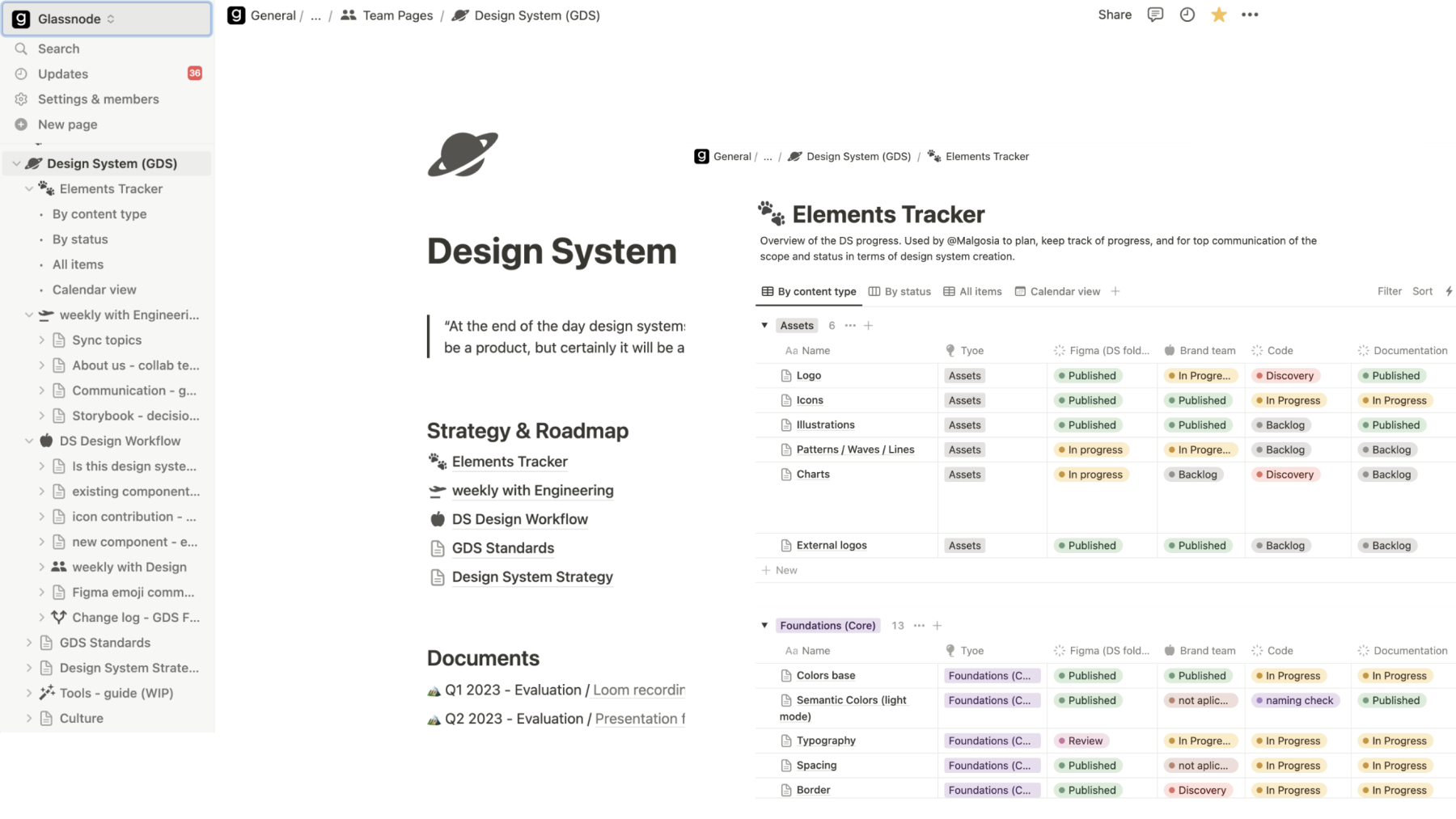
Leading with a point of view.
Leading with a strong point of view.
Setting a course for inspiring directions.
LEARNING #1 The first step is usually the hardest. We all operate better with clear directions and transparent communication.
LEARNING #2 Don't make decisions out of the scarcity or fear. Instead of just responding, do the right choices.
When setting the course for a design system, what matters to me every time is to present clear purpose to the team, highlight the goals we'll achieve, be receptive to the individuals, and shift direction if needed.
I have been leading with a point of view when:
- mapping relational expectations and injecting collaborative spirit
- setting the vision, the strategy, embarking the team with direction
- taking a risk and guiding through transforative phases
- iterating on ways of working towards desired change
Frequently gathered insights through various feedback loops and communication channels have been my guide keeping eye on the course and looking out for opportunities.
I've been gathering frequently the insights through: daily stand-ups, quarterly planning, user interviews, surveys, competitive analysis, communication channels, in order to keep an eye on the course and look out for opportunities of:
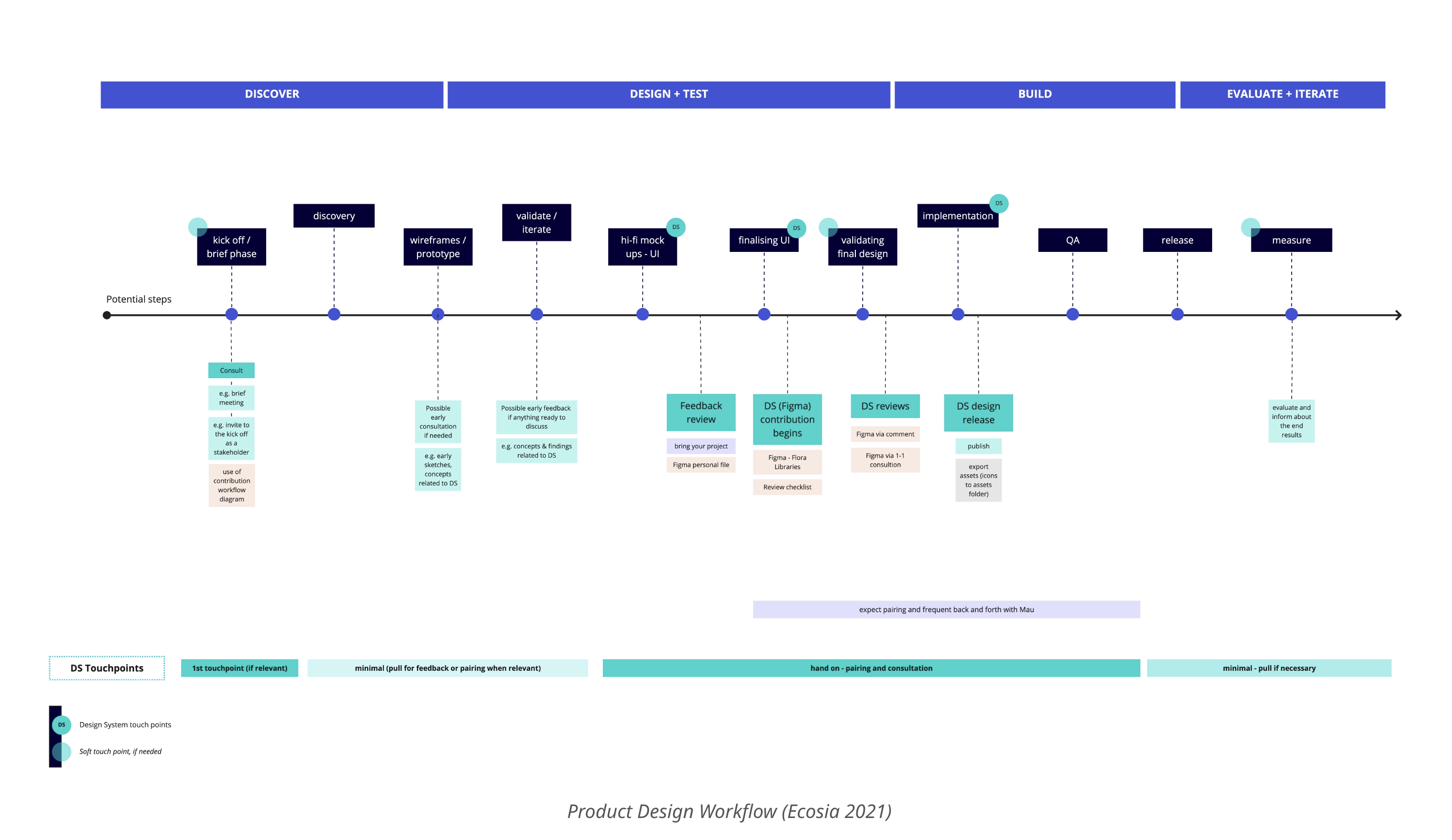
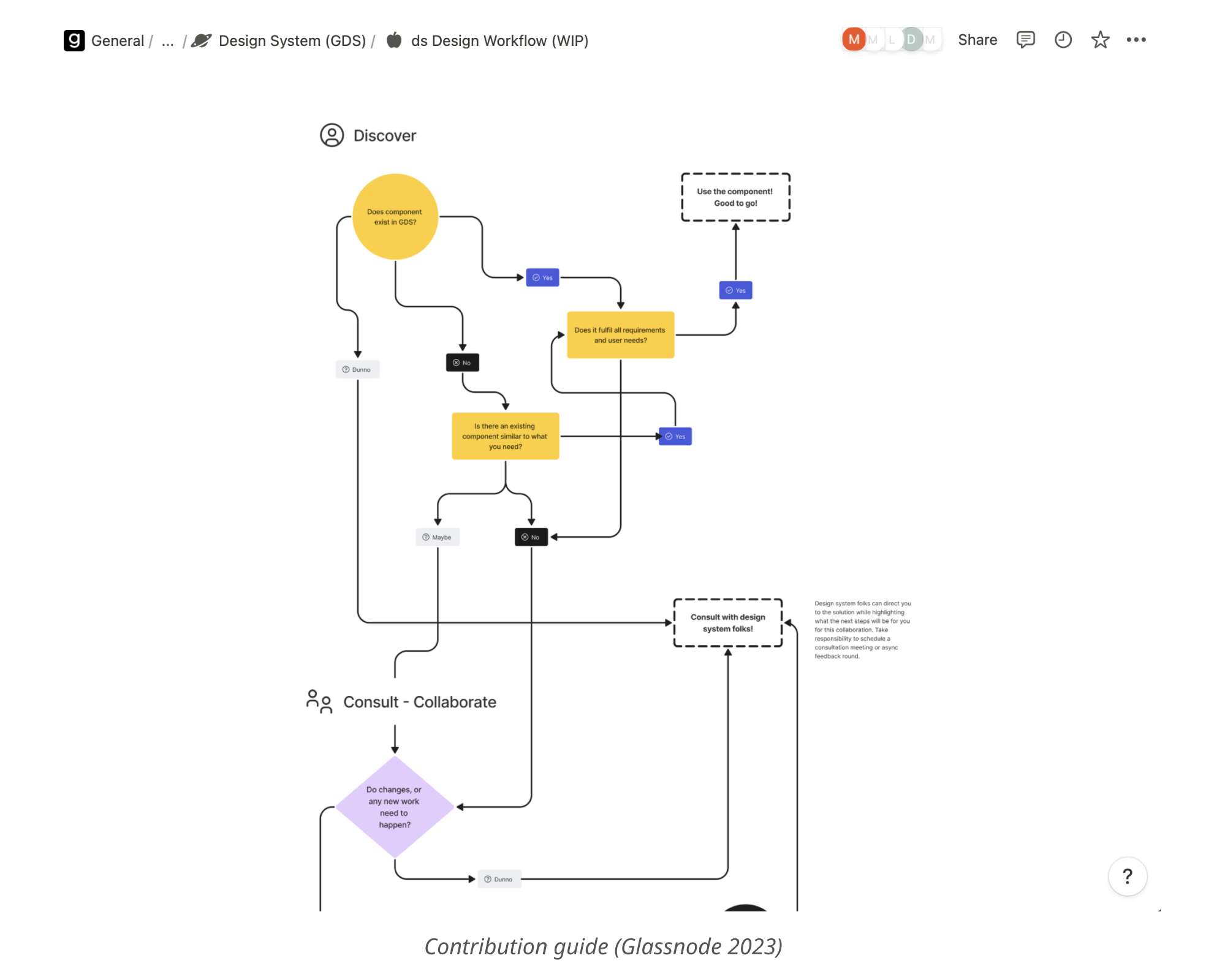
Providing clear direction enabled engineers and designers to gain focus, transparency, grow the system, and plan better. For example, when design system workflow at Ecosia was introduced and implemented, it instantly supported teams with better planing, clarity on expectations and touch-points. It enhaced a collaborative cross-team problem solving, while at the same time helped maintaining design system. Adopting design system mindset inside the product team workflow paided back and speeded transition into new visual language during rebrand phase.
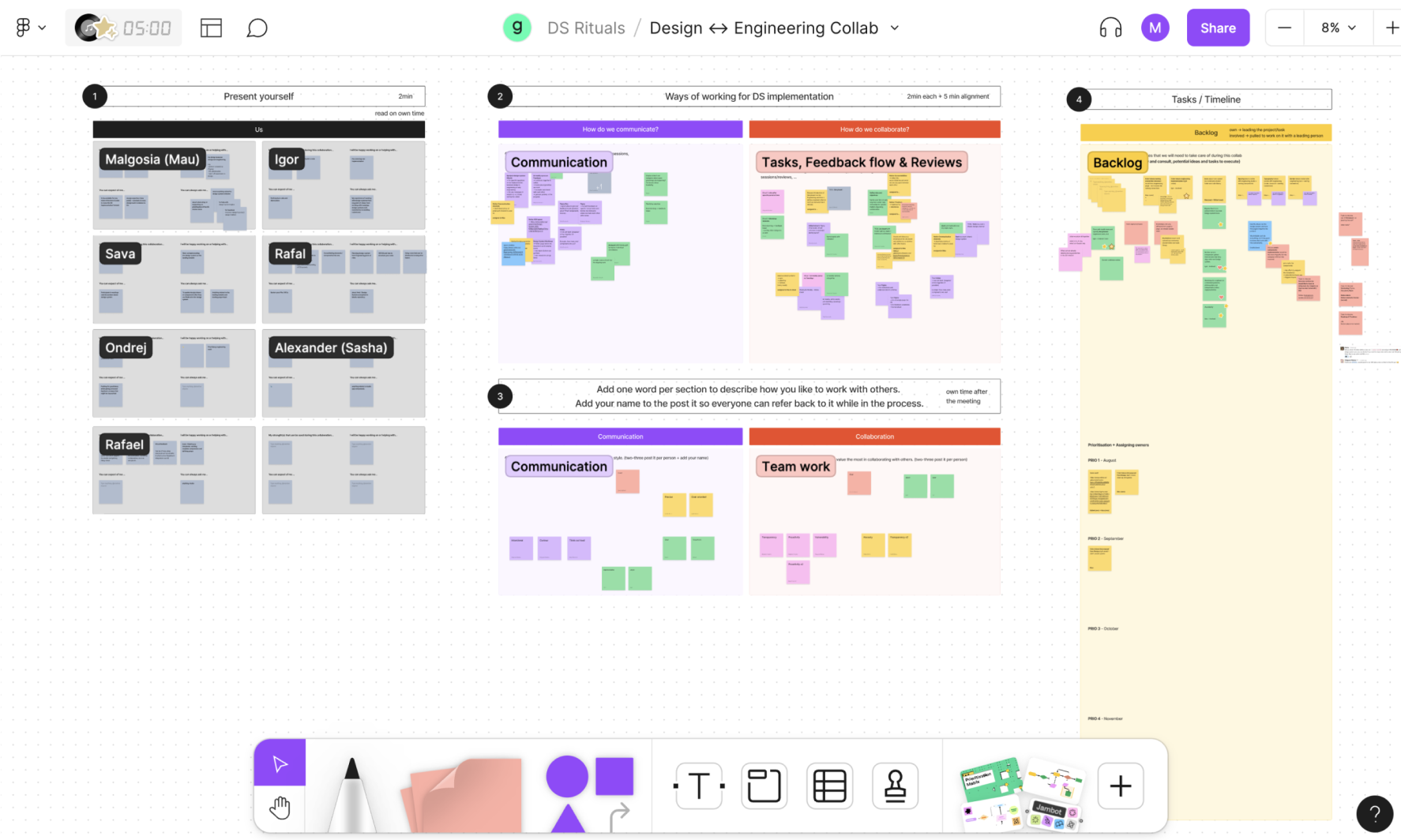
Leading through culture.
Leading through culture.
Creating habits that make you think.
LEARNING #3 It is only lonely if you let it to be. At the end of the day we all strive for sense of belonging and affirmation.
LEARNING #4 We need more courage. Creating moments of courage, can create moments of adoption.
When working with a design system it is not easy to find the quick moments of celebration, or ability to see an instant impact. Work on the design system usually happens out of the spotlight. It may feel as a lonely journey. That's why it is important to identify where the culture must shift by bringing rituals that support the creative work, enable for connection and to hear "thank you" at the end of the day.
What matters to me the most is to provide inspiration when energy is low, or when experiencing momentary hiccups, such as fear of contribution, unfamiliarity with the new tools, burnout from the number of tasks that waterfall on our shoulders. To battle that, I often switch routine, encourage conversations, and workshops along the way.
Rituals mean connection. Examples of rituales I practice.
- Daily opening - how do you feel? / what worries you? / how can I help?
- Retrospectives
- Icebreakers
- Virtual coffee o'clock (building relations)
- Jam sessions
- Feedback loops
- Studio days
- Open hours
- Playground (games, quiz, insights)
- Gratitude + Milestones

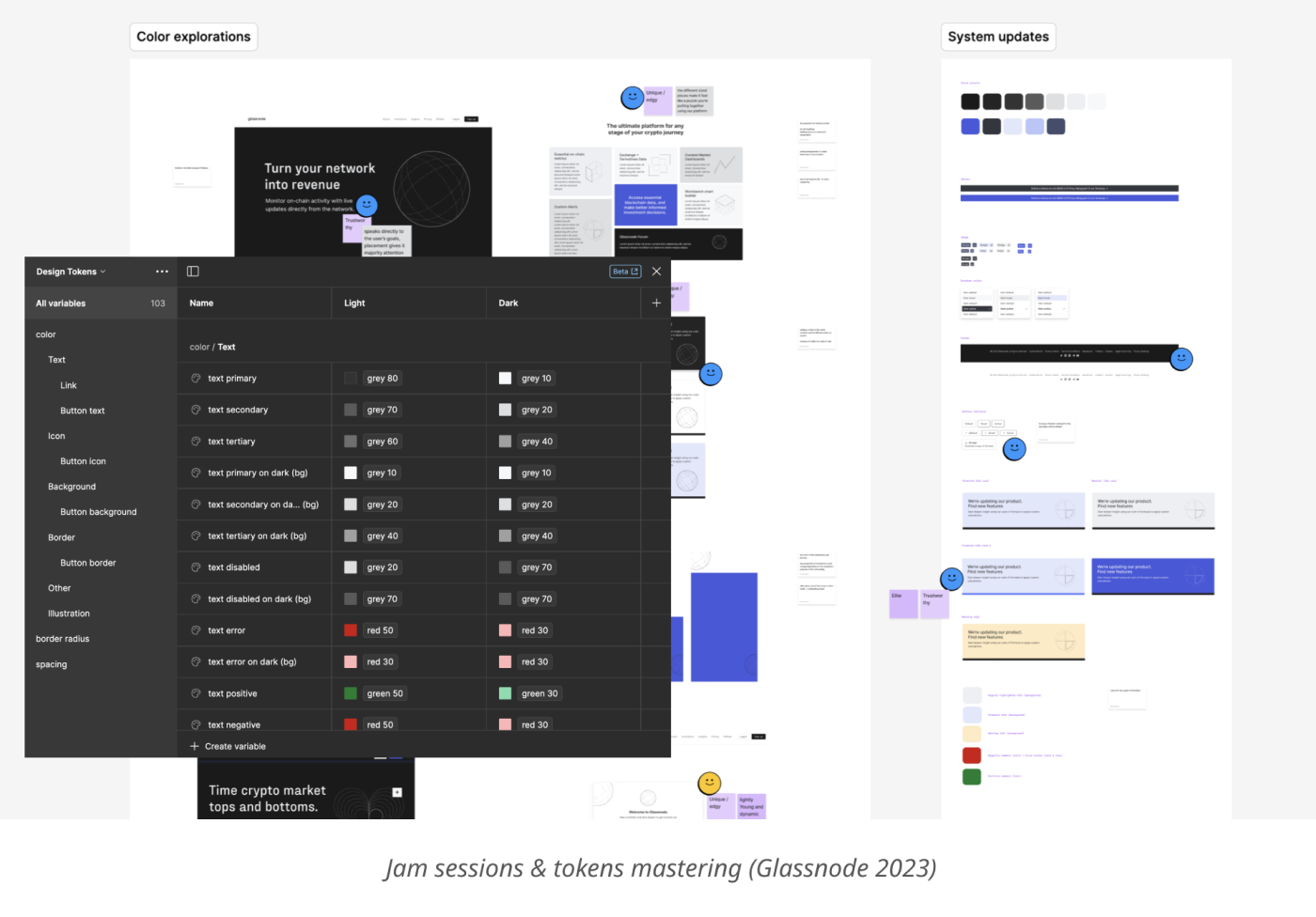
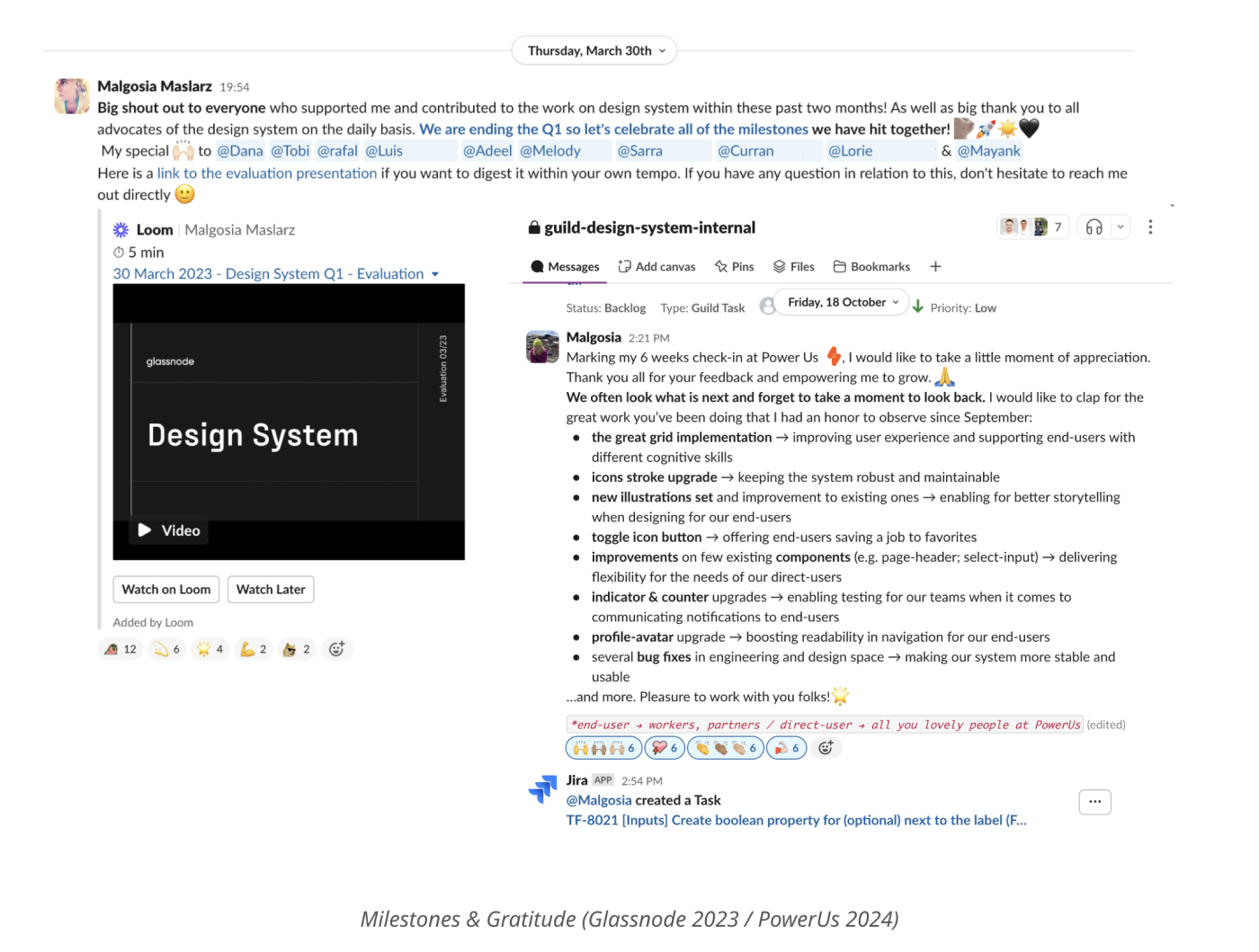
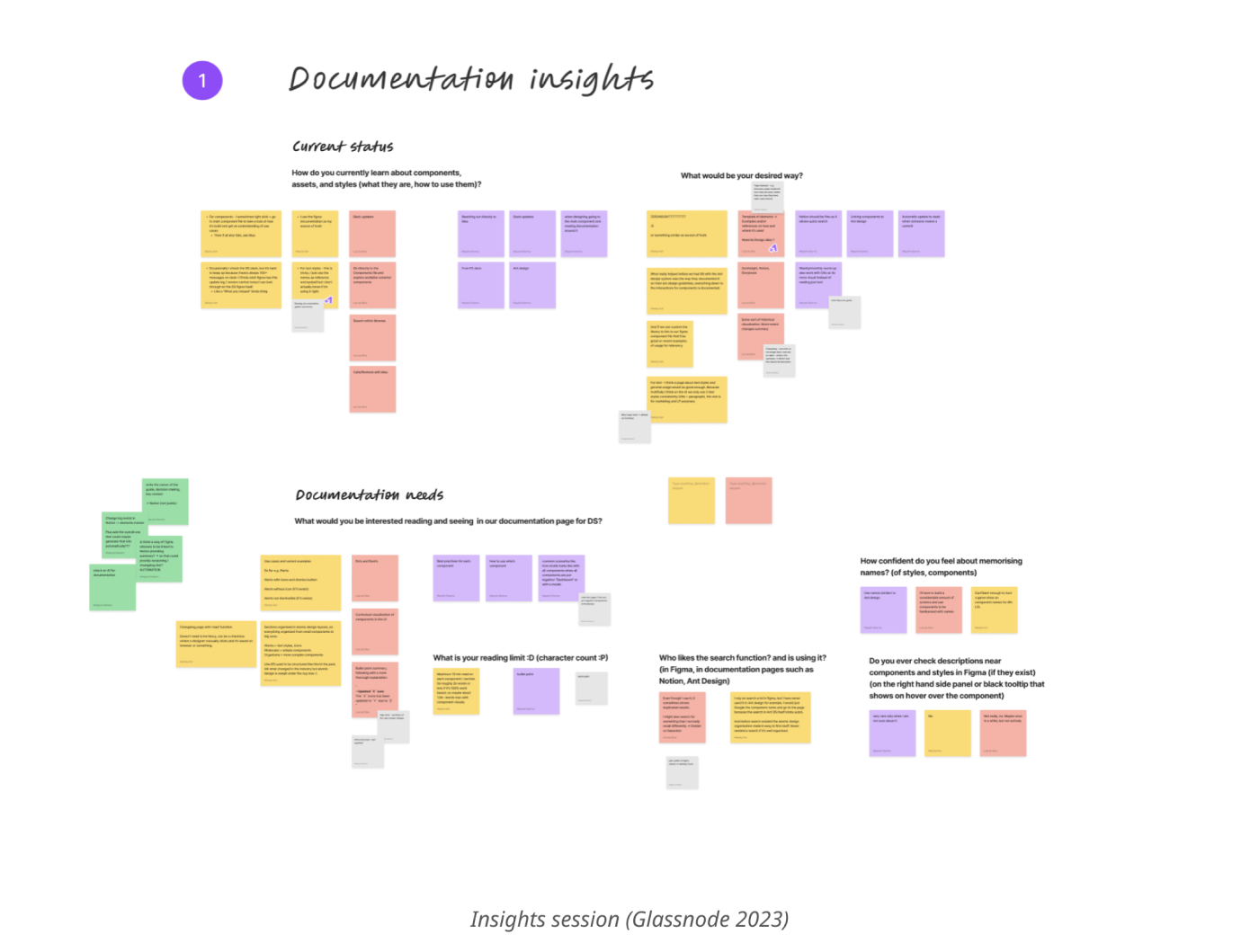
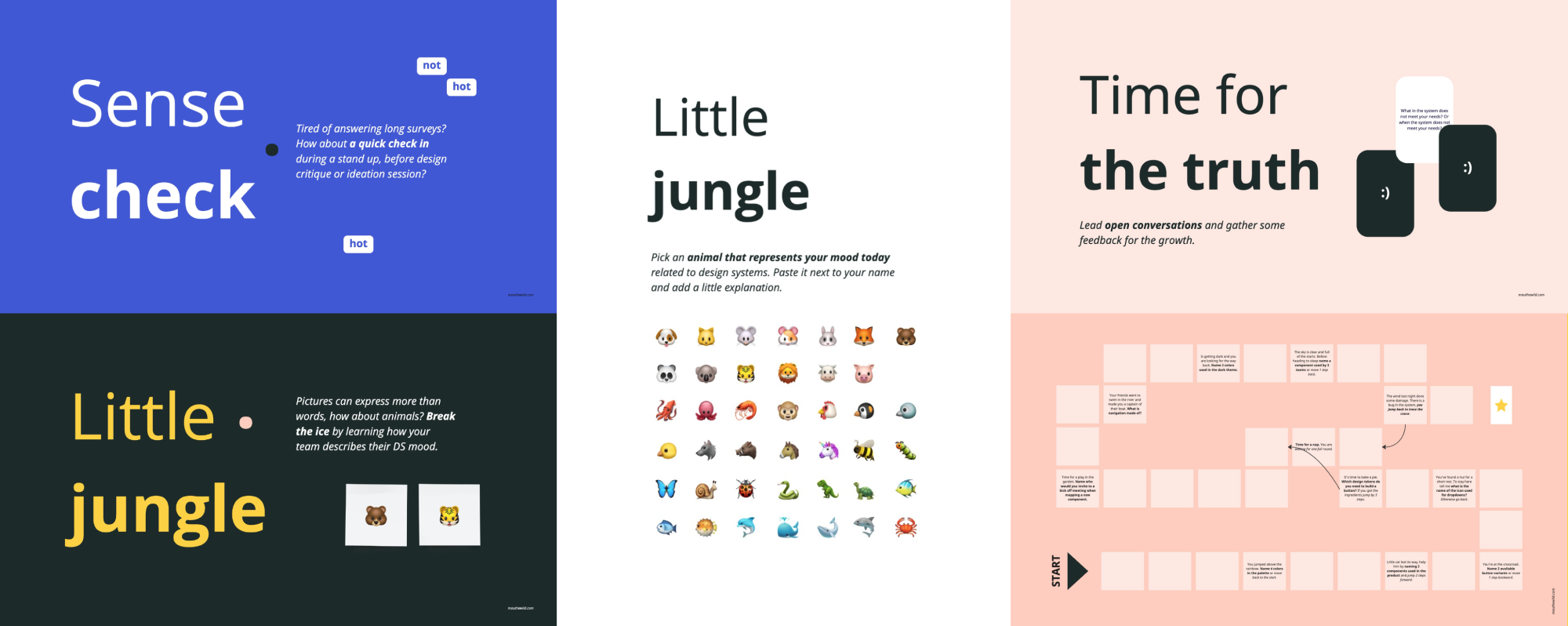
Rituals are an eye opener, that provide instant learnings and elevate working relations, strengthening company culture. For instance DS Studio Days at Ecosia and Glassnode - onboarded brand and product designers into systematic thinking, helped them to learn how to build and structure guidelines and components with different complexities. It significantly improved and speeded up engagement. Apart from it formmed bonds in teams and created positive memories. Retrospectives -helped me to see the sentiments around design system, evaluate the work and impact, prioritize and plan next steps.
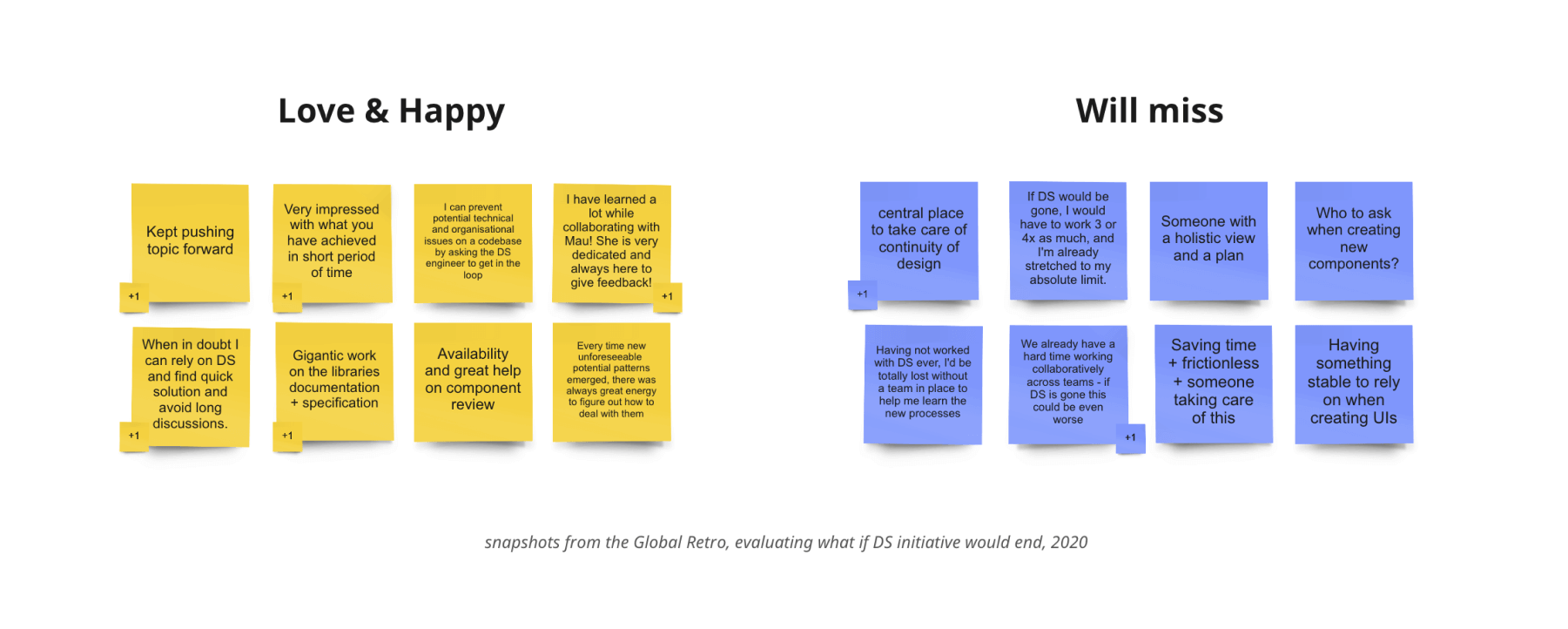
Leading alongside.
Leading alongside.
Staying present and engaged with the work of your team.
Staying present and engaged with the work of your team.
LEARNING #5 Ask good questions, stay curious a litte bit longer.
LEARNING #6 For people, with people.
Leading alongside helps keeping design system moving forward. It has an impact on increase of adoption. It is about being present and available for the team, meeting your peers where they are and taking it from there.
From the start and along the way I always focus on understanding my audience first, each individual, and the context around. The user interviews significantly help to identify the pain points, for example fear from contribution, and downtimes in adoption.
Concluding on how my team likes to learn, often opens doors to undestand how to lead them.
While being present it matters to ask good questions and bring pace, offering guidance on the fly, remaining reliable, authentic, and open. For example, when needed I established 1-1 weekly sessions with designers, focusing on boosting their courage, and their skillset. Empowering designers to gain confidence with design system helps to unblock the traffic on the bridge between design and engineering.
Questions for support. Examples of questions I ask.
- What's the real challenge in this for you?
- And what else?
- How can we plan this to take the stress out of equation?
- Do you think you can take decision on this?
- Is there anything you need from me? How can I help?
- Do you have everything what you need to start with this task?
- What was most useful, or valuable here for you?
- If you say yes to this, what do you say no to?
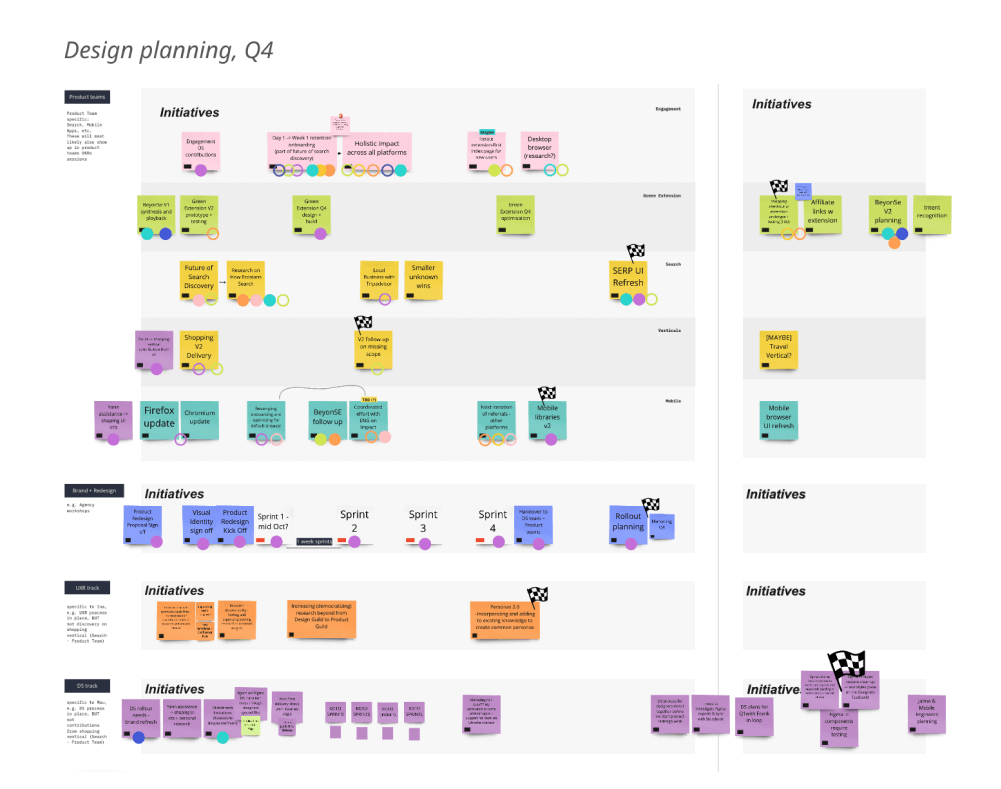
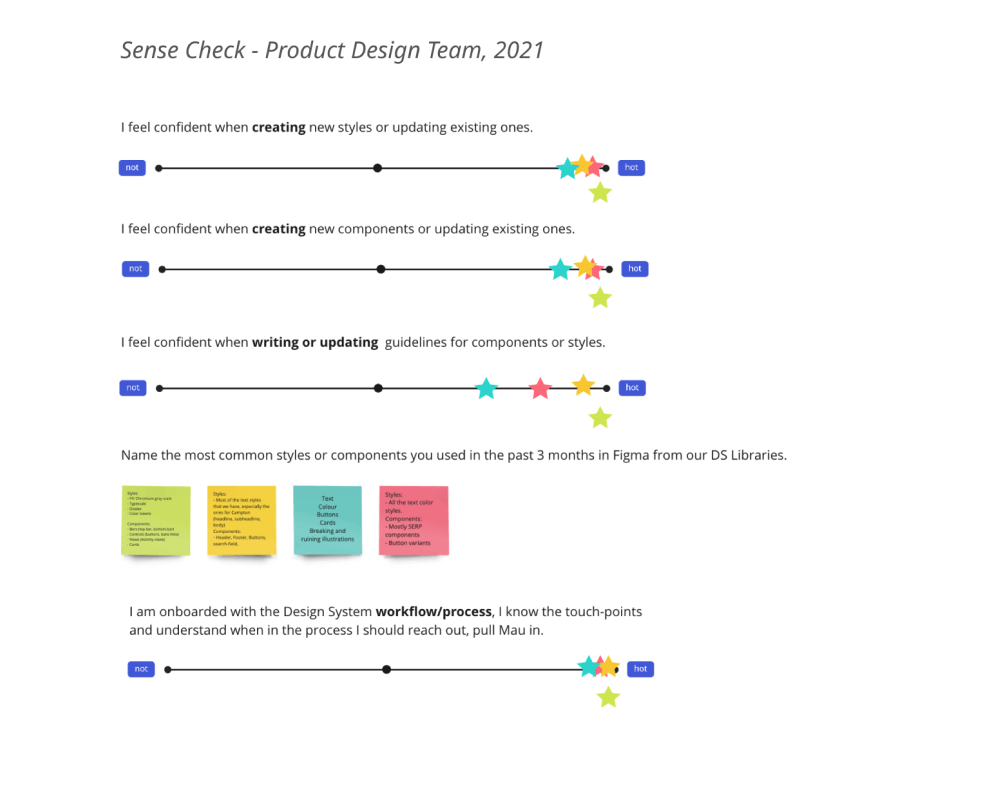
Memoirs of a gardener.
Choosing courage over comfort.
Leading to me is about building courage and empowering others on their journey. Jumping on the train with design system in the company that is learning about design maturity, has limited budget, but appetite to evolve, always was the challenge I embraced with gratitude.
Scary it may sound, yet comes as a greatest yard for strategic and creative training, asking to have willingness to step up, put myself out there, and lean into courage.
Inspired by IDEO Leading for Creativity Course + leader's questions recommended by Michael Bungay Stainer.
Interested to read more? Find about my journey to create a design system → On the road to Flora
Check the adventures challenging it through a company rebrand → Re-identifying belonging
© 2024 mauthewild.com | All rights reserved.
© 2024 mauthewild.com | All rights reserved.
© 2024 mauthewild.com | All rights reserved.
© 2024 mauthewild.com | All rights reserved.
© 2024 mauthewild.com | All rights reserved.